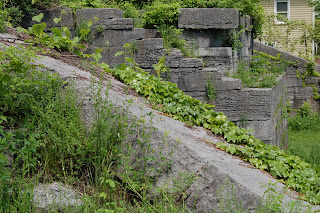When I was a small child I was fascinated by this photograph. The children look happy, clean and fairly well attired but the exterior of the home looks forlorn and shabby. Was this the house the Wills family lived in? I can't remember my mother ever giving me an answer perhaps because she did not know - she was only 2 or 3 years old in the photograph. Unfortunately, I can only identify a few individuals in this photos. If you, dear reader, know a few others please share the identifies with me! The youngest child in the photo is Etta Wills born in September 1917 in Cohoes; she looks no more than two years old. If that is so, the photo was probably taken in Cohoes after the Wills family return there from living in Schuylerville, NY. My mother never identified the man seated in the center....it surely looks like a young John Albert Wills before the ravages of alcoholism. Who are the two young men standing on either side? cousins? neighborhood boys? And who is the more mature woman seated in the center of the children? Is that John's wife Libbie Bissonnette??? Her eldest daughter Celena with the bonnet and knitting in her hands is on her left. Next is Anna Wills. Is that Julia Wills with neatly parted hair and pretty plaid dress on the right side of Libbie? Or is that Julia next to Anna on the far right end? In the front row, from right to left: attentive Elizabeth Wills, unidentified boy, Johnny Wills, another unidentified boy, little Etta Wills, then a space and then a toddler in motion with her mouth open, head angled and knees askew - that is my mother! Two more children were still to come to the family after this photos was taken - Earl and Bobby.
Yes, there are many unknowns but one thing is certain...the Wills family was a poor family. John Wills was never "successful" in his photographic business and Libbie Bissonnette often took in laundry to survive. The house behind them is in desperate need of attention. Life was hard...but the children were clean and happy.


















































